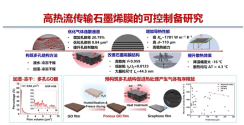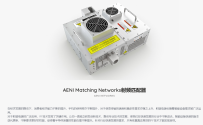Shanghai Institute of Microsystem and Information Technology has made progress in the field of graphene-based chip heat dissipation.
Preparation strategy of high heat-load graphene membrane based on optimized construction of gas escape channels
In traditional graphene film preparation technology, the high temperature process removes the functional groups of the GO raw material and releases a large amount of gas (such as CO, CO2). The accumulation of gas causes the film to expand and increase structural defects, which seriously reduces the thermal conductivity. The research team proposed to pre-construct ordered flat channels inside the GO membrane to guide the directional escape of gas during high-temperature treatment and reduce structural damage, thereby constructing a highly oriented thick film structure and achieving a breakthrough improvement in thermal conductivity. Based on this strategy and related parameter optimization, a graphene film with a thickness of more than 110 microns and a thermal conductivity of up to 1781 W·m⁻¹·K⁻¹ was successfully prepared, which is 16.2% higher than the traditional method and shows great potential in reducing the hot spot temperature of the chip. This work effectively solves the problem of the sharp drop in thermal conductivity of graphene film when the thickness increases, and provides a new solution for thermal management of high-power density electronic devices. The related paper titled “Achieving Ultra-High Heat Flux Transfer in Graphene Films via Tunable Gas Escape Channels” was published in Advanced Science 2025, 12, 2410913. (). The first author of the paper is Zheng Haolong, a doctoral student at the Shanghai Institute of Microsystem and Information Technology, and the corresponding authors are Associate Researcher He Peng, Researcher Ding Guqiao and Professor Wang Gang from Ningbo University.






